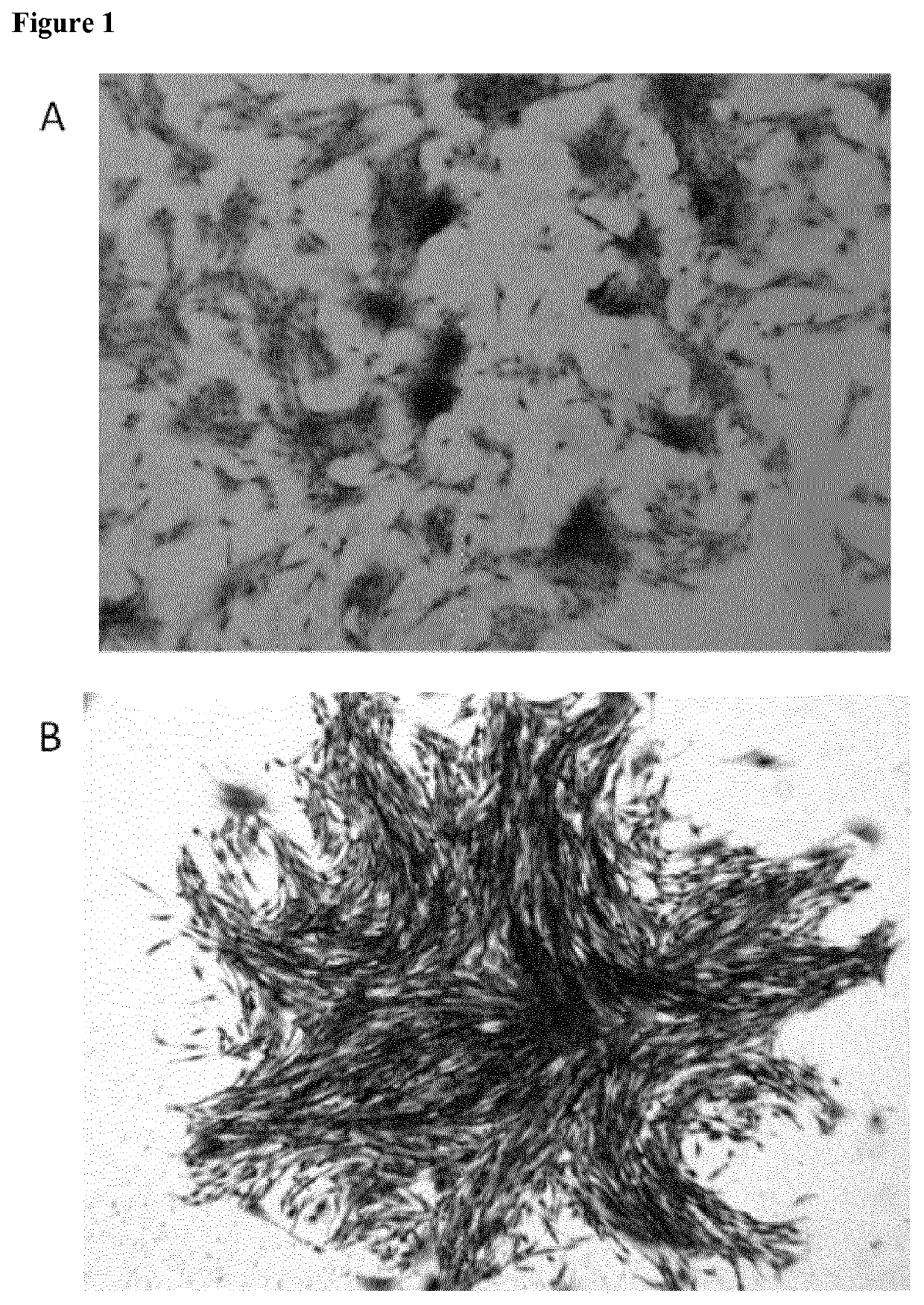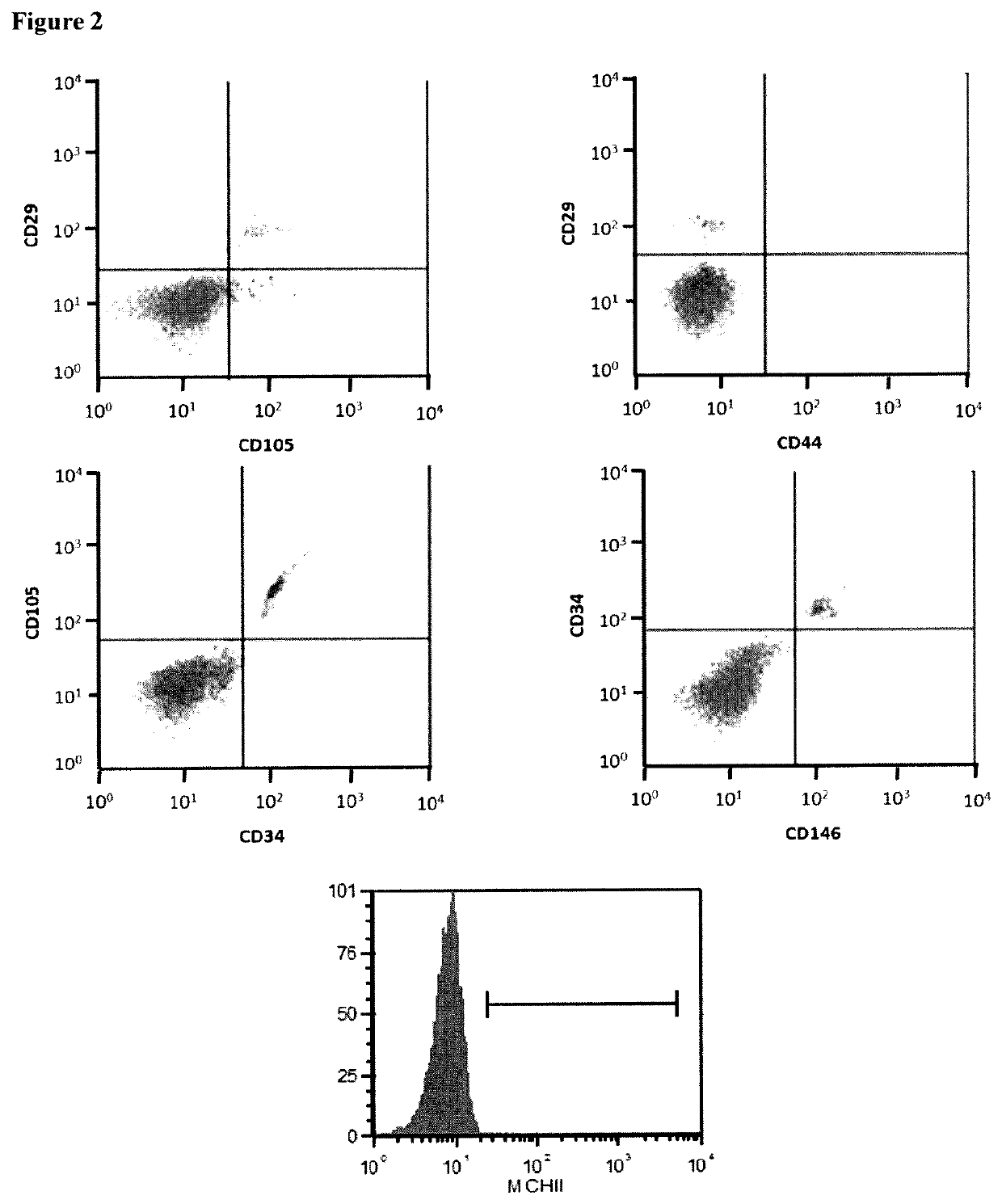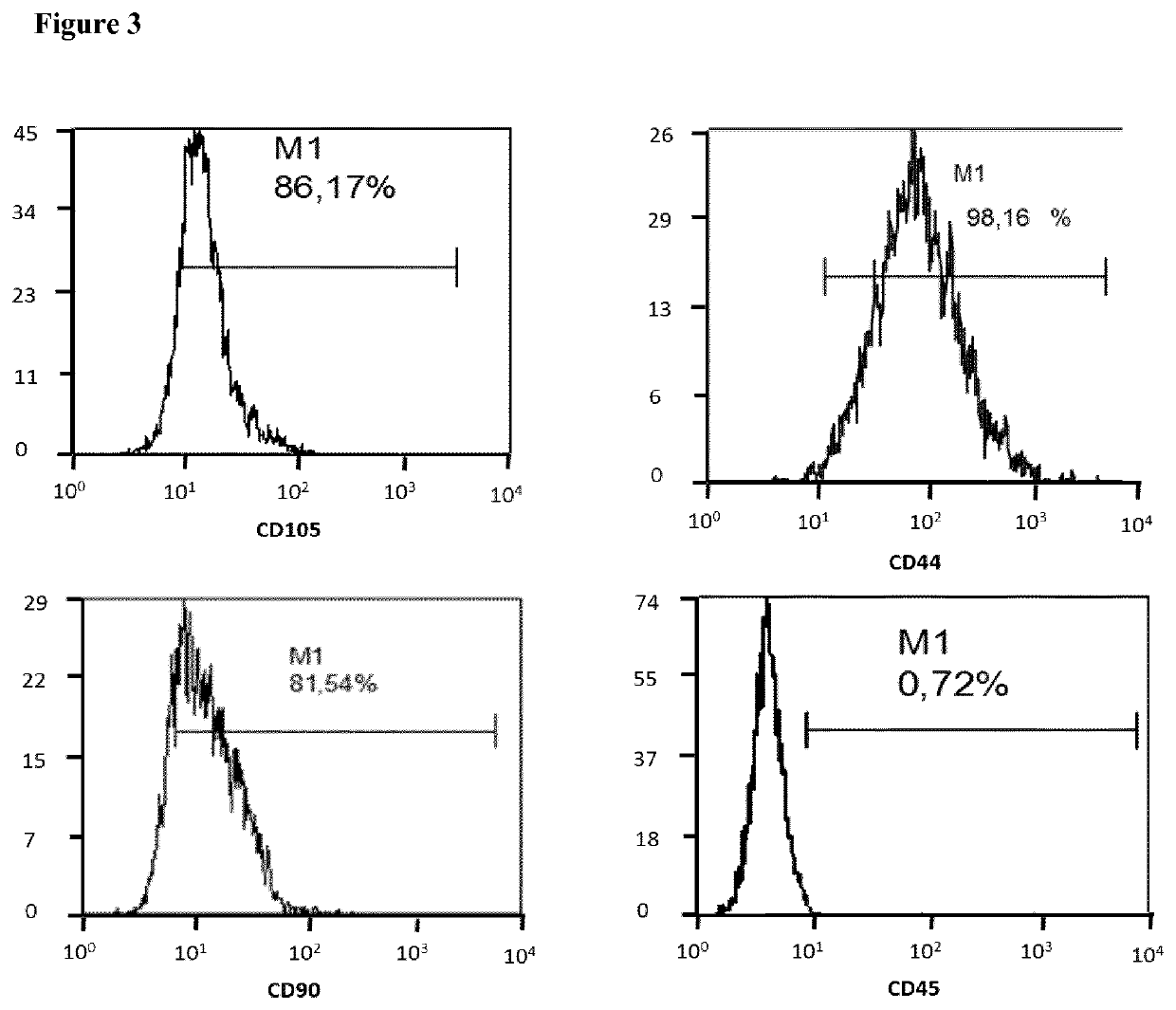Mammalian muscle-derived stem cells
a technology of stem cells and muscle, applied in the direction of skeletal/connective tissue cells, drug compositions, cell dissociation methods, etc., can solve the problems that the current veterinary regenerative medicine does not meet the requirements of the patient, and achieves the effect of avoiding potential contamination sources, reducing the number of manipulations, and simple methods
- Summary
- Abstract
- Description
- Claims
- Application Information
AI Technical Summary
Benefits of technology
Problems solved by technology
Method used
Image
Examples
examples
[0121]Materials and Methods
[0122]1. The Sampling Method: Muscular Microbiopsy
[0123]Microbiopsy procedures were performed on standing, awake horses. Microbiopsy specimens were obtained from triceps brachii muscles (long head, at the intersection of a vertical line extending from the tricipital crest and a line between the scapulo- and radio-humeral joints) of each horse (n=3).
[0124]Microbiopsy specimens were collected with a 14-gauge microbiopsy needle and a microbiopsy pistol. Briefly, the sampling site was shaved (one cm square) and aseptically prepared. Each sample (approximately 15 to 20 mg of tissue) was collected at a depth of 5 cm in the long head of the triceps brachii muscle, through a skin incision made with the tip of a scalpel blade nr 11. Closure of the skin incision was not necessary and the whole microbiopsy procedure was completed within 15 minutes. Immediately after collection, each sample was placed in 6 ml of culture medium composed of DMEM / F12 with 20% fetal bovin...
PUM
| Property | Measurement | Unit |
|---|---|---|
| weight | aaaaa | aaaaa |
| depth | aaaaa | aaaaa |
| cross reactivity | aaaaa | aaaaa |
Abstract
Description
Claims
Application Information
 Login to View More
Login to View More - R&D
- Intellectual Property
- Life Sciences
- Materials
- Tech Scout
- Unparalleled Data Quality
- Higher Quality Content
- 60% Fewer Hallucinations
Browse by: Latest US Patents, China's latest patents, Technical Efficacy Thesaurus, Application Domain, Technology Topic, Popular Technical Reports.
© 2025 PatSnap. All rights reserved.Legal|Privacy policy|Modern Slavery Act Transparency Statement|Sitemap|About US| Contact US: help@patsnap.com



